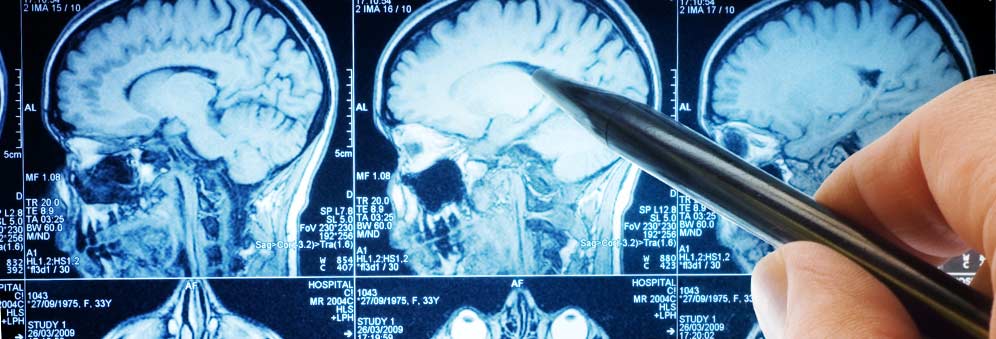Schizophrenia linked to functional disconnections in the brain
Attempts to understand schizophrenia and its diverse symptoms have taken researchers and psychiatrists on a journey throughout the brain.
Schizophrenia is one of the most common of the mental illnesses and is thought to affect about 70 million adults worldwide – yet effective alleviation of its broad range of symptoms continues to elude medical practitioners.
When Dr John Crabtree began studying the brain 35 years ago, his initial fascination was with the development of the brain’s structural connectivity. But over the years, his primary interest has been to understand the malfunctions of the brain that underlie disease processes.
His holistic approach to viewing this complex organ within a wide context of human behaviour could provide a useful model for understanding the debilitating symptoms experienced by schizophrenics in trying to cope with their environment.
“Wherever you look in the brain, from the spinal cord all the way up to the cerebral cortex, there are broadly speaking two functional parts,” he explains. “There is an information-bearing part, which provides ‘content’, and a complementary part that provides ‘context’, or timing, – because in order for a piece of information (content) to be meaningful, there needs to be a temporal background (context) in which it occurs.”
This content-context dichotomy can best be illustrated in terms of movement – we need to be able to distinguish between our own self-generated movements and movements occurring within the environment around us. Normally, contextual timing mechanisms allow us to distinguish between these two types of movements, enabling us to anticipate changes in the environment resulting from our own movements.
In basic terms, schizophrenia can be viewed as a temporal breakdown, or functional disconnection, among content-bearing parts of the brain. Dr Crabtree explains: “If context-providing parts of the brain fail to co-ordinate the timing among content parts, it will have a devastating effect on the individual– information will lose its meaning and behavioural anticipation of environmental changes will be lost.”
The research in Dr Crabtree’s lab in the School of Physiology and Pharmacology concerns the functional organisation of the thalamus (from Greek meaning ‘inner room’), which occupies a central region of the brain. The thalamus is composed of ‘content’ and ‘context’ nuclei.
Dr Crabtree’s particular focus is on one of the context-providing nuclei, the thalamic reticular nucleus (TRN) (from Latin meaning thalamic ‘net-like’ nucleus). The TRN provides context, or temporal co-ordination, for the information transmitted through the thalamic content-bearing nuclei, rendering that information meaningful.
Studies on schizophrenia over the past 100 years or so have defined three categories of symptoms – positive, negative and cognitive. Positive symptoms are those that characterise the psychotic aspects of the illness, including hallucinations, delusions and thought disorder. Negative symptoms are those that interfere with the individual’s ability to function ‘normally’ around others, such as emotional withdrawal, a diminished social drive and poverty of speech. Cognitive symptoms include impairments in perception, attention, working memory and motor execution.
Traditionally, attempts to understand schizophrenia have centred on a symptoms-based approach. Because of the diversity of symptoms, the conclusion is often reached that schizophrenia is a heterogeneous disorder consisting of multiple disease types that will require many treatments, each uniquely tailored to each version of the illness.
More recently, alternative approaches have been taken that propose a single ‘metaprocess’ that is disrupted in schizophrenia.
“Here, the various symptoms of the illness are seen as secondary to a more fundamental problem,” explains Dr Crabtree. “The proposed metaprocesses have in common three themes. First, the disorder involves widely distributed information-bearing regions of the brain including the cerebral cortex, hippocampus, cerebellum and thalamus. Second, there are functional disconnections, or breakdowns in temporal co-ordination, among these regions. And finally, loss of temporal co-ordination is specifically attributed to context-providing elements within these regions of the brain.”
“A single disrupted metaprocess fundamental to schizophrenia can indeed have wide explanatory application. To take an obvious example, auditory hallucinations (hearing voices) can readily be viewed as a content-context malfunction within auditory areas of the brain. We can normally distinguish whether the source of auditory movements are externally generated (voices of others) or internally generated (our inner voice or thoughts). However, this distinction is lost when the timing mechanisms of the relevant context parts of the brain fail to co-ordinate the relevant content parts of the brain, which can result in misattributing our inner voice to an external source.”
A simplifying metaprocess approach to understanding schizophrenia has evolved only within the last 20 years but it actually echoes the idea of a primary pathology proposed in the original definition of the illness.
Dr Crabtree adds: “A content-context model of schizophrenia, with its emphasis on the failure of context-providing parts of the brain to temporally co-ordinate the information transmitted by content-bearing parts of the brain, offers a viable framework within which to reassess our understanding of schizophrenia and direct future research.”

